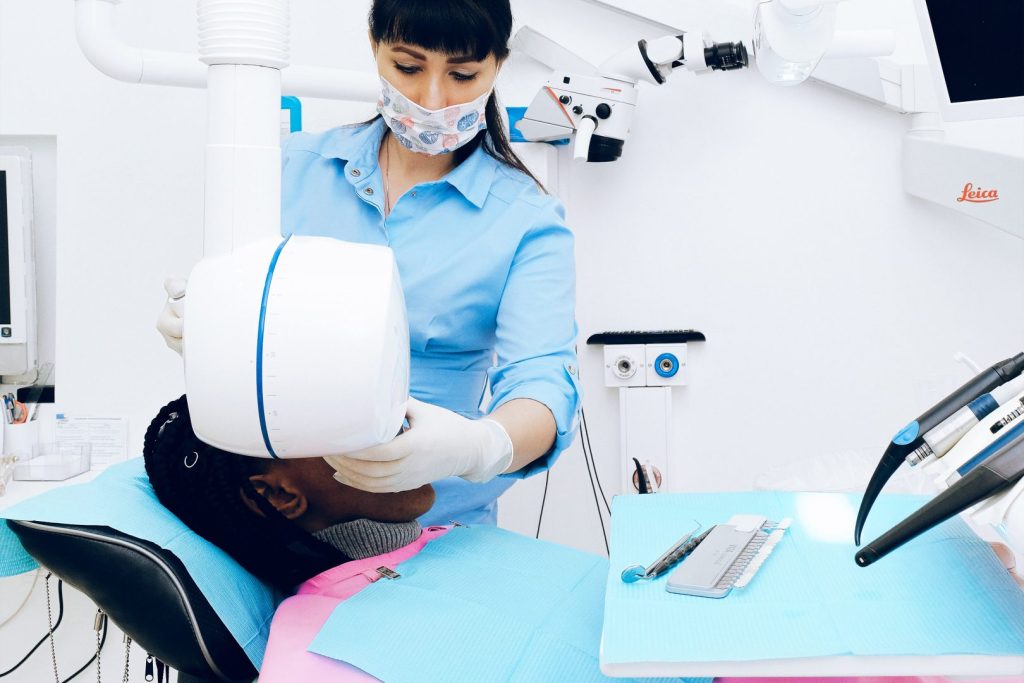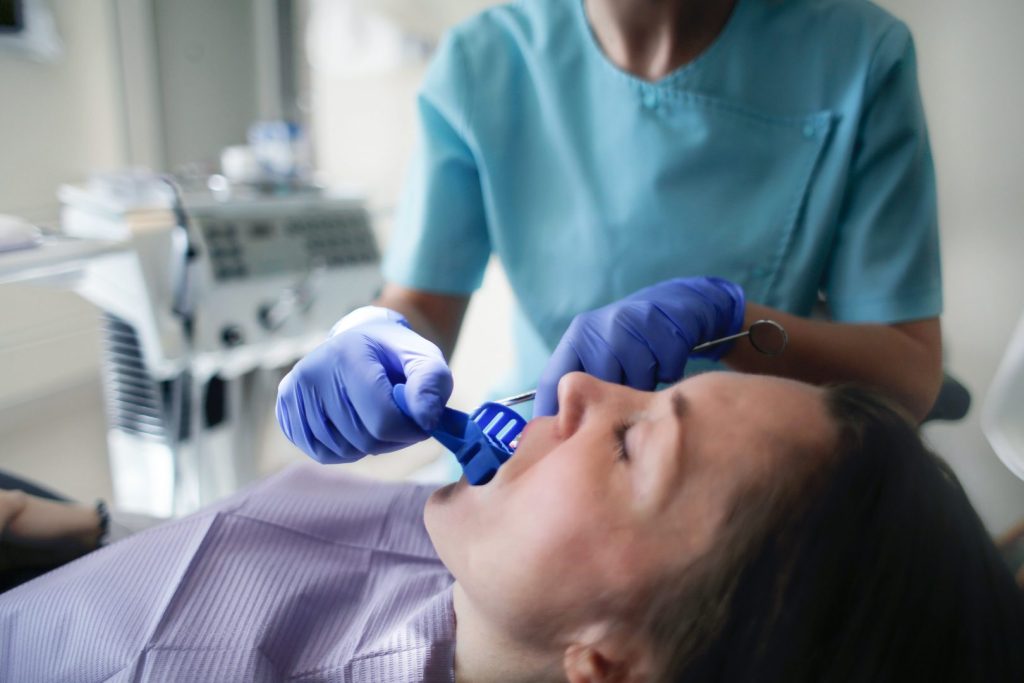No two dental clinics are exactly alike, and a dental assistant’s responsibilities will vary depending on the practice where they’re employed. That’s why leading dental assistant training programs like Risio make sure to train dental assistants to have a wide range of skills—but it still helps to do some research on the kinds of jobs you might be asked to perform if you’re preparing for a career in this field.
Below, we’ve put together a list of the different tasks you might be asked to perform on patients as a dental assistant, depending on the clinic where you work. As you read, you’ll discover just how versatile well-trained dental assistants are, and how many competencies it can help to develop. Let’s get started.
See also:
Tasks Dental Assistants Regularly Perform
Taking X-Rays
X-rays are taken to allow dentists to see inside the teeth, their nerves, and the bones under the gum line. This is done by having the patient bite down on digital sensors and stay still to gain accurate images. X-rays are used to properly diagnose and prevent any dental issues a patient is having.
Dental assistants aid the dentist in taking these images and their role is to educate their patients on the risks of radiation from x-rays and to make sure their patient is comfortable moving forward with the examination. Once the patient is comfortable and ready, dental assistants take the images and present them to the dentist for examination.

Impressions & Bite Registrations
Dental impressions and bite registrations are used to create a replica of the mouth and teeth to identify the different structures and details of a patients’ mouth. These replicas are used to create dentures, crowns, bridges, and other restorative dental devices.
Dental assistants perform the task of taking impressions and bite registrations to help the dentist identify proper measurements for the type of dental device a patient needs.
Applying & Removing Rubber Dams
Rubber dams are used to isolate a specific area of the mouth that a dentist is operating on. These dams are used to separate any surrounding tissue from the area being operated on, as well as keeping the operational site dry.
Dental assistants may be the one to place a rubber dam around an operational site for the dentist using clamps to secure it in place.
Placing & Removing Matrix Bands & Wedges
Matrix bands are a piece of metal that is formed to adapt to the surface of a tooth that needs restoring. This band reproduces a tooth’s natural contours and assists in procedures that restore cavities.
Using a matrix band helps to prevent the composite used for a cavity from touching an adjacent tooth. Dental assistants may aid in placing these bands and wedges to save time for the dentist and patient.
Applying Cavity Bases & Liners
Cavity bases and liners are used to prevent bacteria or other irritants from affecting restorative measures used on the teeth. Cavity bases and liners are also used to reduce sensitivity to affected teeth. Liners are thinner layers used in this process, while bases are thicker layers used to protect the teeth.
A dental assistant’s role in placing cavity bases and liners involves properly preparing the tooth for the application of a base or liner and prepping the materials that will be placed on the tooth.

Polishing Teeth & Providing Fluoride Applications
Polishing teeth helps to reduce plaque buildup on your teeth by limiting bacteria growth. Fluoride application also reduces the amount of harmful bacteria in the mouth and supports healthy enamel and gums.
Dental assistants should be familiar with the benefits of polish and fluoride treatments. This allows them to properly educate patients and maintain a comfortable environment for them.
Dietary Counselling
The health of your teeth are impacted by many factors other than brushing, flossing, and oral hygiene. What you eat can impact the health of your teeth as nutrients are taken from food to maintain healthy bones, teeth, gums, and renews tissues in the body.
Foods that are high in sugars, carbohydrates, and starches may lead to plaque buildup on the teeth. Dental assistants are often familiar with how diet impacts a patient’s oral hygiene and should be prepared to educate individuals about how diet impacts their oral health.
Applying Sealants & Desensitizing Agents
Sealants act as a barrier against bacteria and food particles, protecting the enamel and preventing tooth decay. Desensitizing agents are used to alleviate painful symptoms of tooth sensitivity to hot or cold items in the mouth. Dental assistants may be required to apply sealants or desensitizing agents to the patients’ mouth.
Tasks that Require Additional Training
The tasks mentioned above are not the only roles that a dental assistant is involved in. Many other tasks may require additional training and can include:
Removing Sutures
With additional training, dental assistants may be required to remove sutures from dental operations. Dental assistants with this additional training are able to perform the removal of sutures to aid the dentist in procedures.
Working with Temporary Crowns & Restorations
Temporary crowns are used on patients who require a crown, as it can take up to a few weeks for the permanent crown to be made. Temporary crowns protect the tooth while the patient’s permanent crown is being made.
As mentioned earlier, it is a dental assistant’s role to take the preliminary impression of the patient to have their temporary and permanent crowns made. Dental assistants are then required to instruct the patient on the precautions of the temporary crown, such as what to avoid and how to floss properly.
Placing Gingival Retraction Cords
Gingival retraction cords are used to move gums out of the way when taking an impression of the mouth. Getting an accurate impression of the mouth is an important role for dental assistants, as these impressions may be used for crown procedures. Dental assistants with additional training will be knowledgeable in how to use gingival retraction cords to aid in getting accurate impressions.
Limited Scaling
Scaling is used on patients who have gum disease or severe plaque buildup, and it helps clean the area below the gumline. This type of cleaning is more vigorous than the routine cleaning that is performed during regular checkups. With additional training, dental assistants are able to perform this procedure with specific limitations in Alberta.
Learn More About the Role of a Dental Assistant
Now that you have learned about some of the important roles and skills of a dental assistant, you can begin to look for schools that will prepare you for this rewarding career. At Risio Institute, we can train you to have the skills and confidence this job requires. Contact us to learn more about how Risio Institute can prepare you for the long-lasting career in dental assisting.

